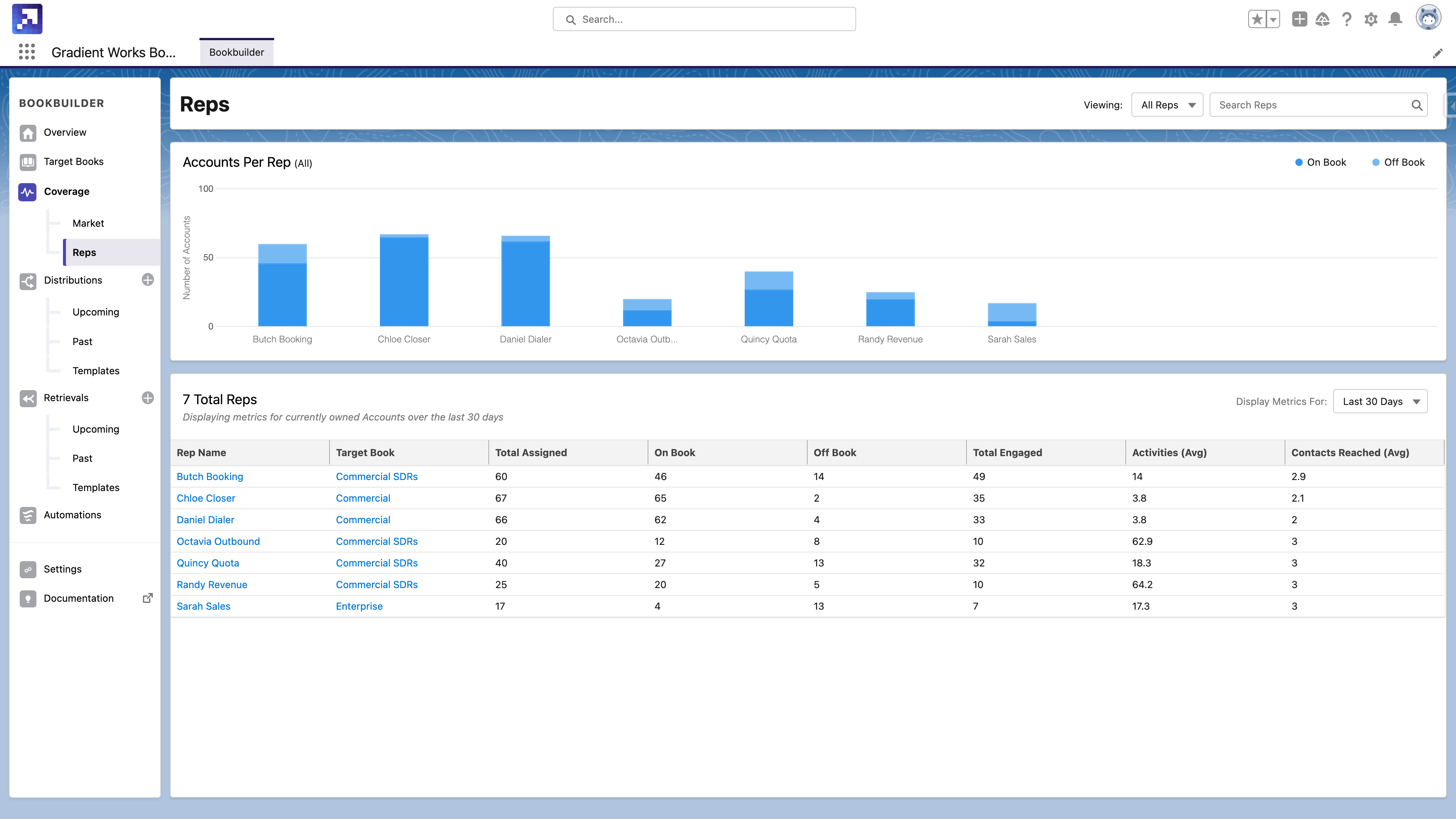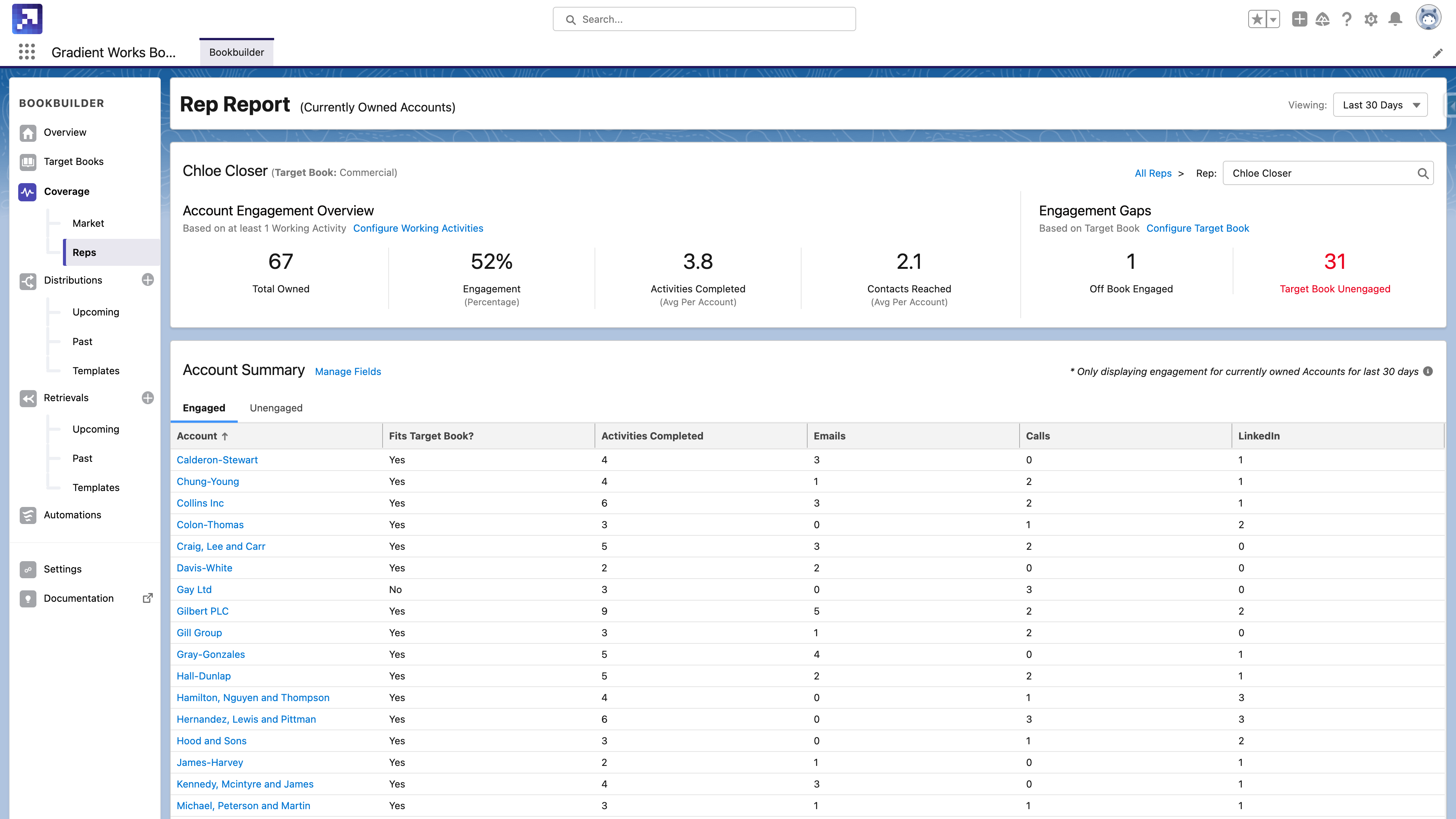Here are some things we know to be true about B2B sales.
It can take 20 or more touches to engage a cold B2B prospect. Buyer groups tend to consist of 6-10 people, and multi-threaded deals are 30-50% more likely to close. Reps need to engage multiple contacts per account, and contact them often. Together, this means reps may need to engage 15-20 times before they even set a meeting with a target account.
Further, Gartner says only about 5% of the buyer journey is actually spent with a solution's sales team.
The end result is a complex, delicate and time-consuming sales process, and reps can only afford to spend this kind of time on the accounts most likely to convert.
So how can you ensure your reps are primarily focused on the highest-potential accounts at all times? How you can avoid wasting precious quota capacity on the wrong accounts? And most of all, how can you increase sales productivity?
You need to a) know which accounts have the highest potential and b) be sure reps are actually working on those accounts. This sounds simple, but we all know it's not.
A rep's book of business impacts productivity
A few things about a rep's book of business impact how productive - and successful - that rep can be. (Sources for all these stats listed at the end of the post.)
1. Reps with smaller books create more opportunities.
When a rep's book of accounts is too large, their attention becomes fragmented. They're overwhelmed with choice and don’t know which accounts to focus on, which means they tend to work more accounts less deeply.
Since it usually takes a dozen or more touches to get a response from a prospect, reps may not be reaching those thresholds if they aren’t engaging accounts often enough. Sales leaders can help their sellers focus by assigning them smaller books so they can spend more time with each account. Rotate in new accounts regularly so they have fresh accounts to feed the top of their funnel. Remove state or unworkable accounts from their books.
2. Reps who multi-thread create more opportunities.
Most reps engage with just 1-2 contacts per account. In fact, older research suggests that 78% of B2B reps engage with just a single contact per account, though hopefully that number is a little higher now.
But we know that the typical B2B buyer is a committee comprised of 6-10 people, often from multiple teams. Sales reps who adopt a multi-threaded approach - talking to multiple contacts at an account - are 30-50% more likely to successfully close a deal. The reps who only contact 1 or 2 contacts per account are less likely to even create an opportunity. Sales leaders should be sure reps are multi-threading every single account in their book.
In order to have the best chance at success, reps should own small focused books, engage with multiple contacts per account, and reach out to those contacts many times.
Adopt dynamic books for smaller, focused books of business
So how can you be sure reps have these more focused books with fewer accounts, and that they're engaging those accounts thoroughly? Gradient Works and a dynamic books approach can help increase sale productivity.
Dynamic books has 3 fundamental steps:- Select and prioritize high-potential accounts
- Regularly assign high-priority accounts to reps with available capacity
- Optimize coverage of your addressable market and hold reps accountable
We've got lots of other resources if you want to learn more about selecting the right accounts or dynamically assigning accounts to reps with capacity. This post is going to focus on step 3 - optimizing account and market coverage, and holding reps accountable for thoroughly working their assigned accounts.
Let's talk about how that works, with screenshots and concrete examples taken from Gradient Works Bookbuilder.
Optimize your team's account coverage
First, let's start by looking at a team-level rep coverage report. In this example, we're playing the role of a sales manager with 7 reps on their team.

First, we see immediately that our reps' books are not equal. Some reps have a lot more accounts in their name than others. Poor Octavia and Sarah only have 20 and 17 accounts, respectively. In this case, you might want to start by evening out your account distribution a bit - give those women some more accounts! You can do a one-time distribution to top them off, or retrieve some unworked accounts from the reps with 60+ accounts and redistribute those to the reps with fewer accounts.
Second, you can see that some reps are working more "off-book" accounts than others. An account is considered off-book if it's not in a rep's target book. A target book is a book of accounts that fit some set of criteria you've set. In this case, let's assume our target books are filled with accounts that fit our ICP and have shown intent. I'm not yet concerned that some reps have more off-book accounts, because it might mean that they're prospecting into new accounts that haven't been enriched yet. But it might also mean that they're spending time on the wrong accounts. We'll talk more about that in the next report below.
Finally, you can get a sense of how your team is engaging with their accounts overall. You can see how reps compare to each other, and start to understand your team's general activity levels (you can use these for benchmarks, more on that in a minute too). For example, we see that some reps average a lot more activities per account than others. And some reps engage with more contacts per account than others.
Improve each reps' book coverage
So, let's look more closely at an individual sales rep's coverage report in Gradient Works. Here's the detailed report for Chloe Closer.

We've already seen that Chloe owns a lot of accounts compared to some of her colleagues. But she's only engaged with 52% of them - that means there are 32 accounts she's not actively working right now. Those are accounts that Octavia could be working.
We also see that Chloe is averaging 3.8 activities and 2.1 contacts per account. That's not very deep account penetration. Some of her account activity is shown here in the Account Summary listing (and you'd be able to scroll her full account list if this wasn't just a screenshot). Some of these accounts look okay. For example, about halfway down is Gilbert PLC - she's emailed, called, and reached out on LinkedIn for a total of 9 activities so far. But most of them don't look this good.
Since we're playing the role of Chloe's manager today, I would definitely be sure to bring this up in our next 1:1. I would go through this account list with her, asking about how she's working these accounts, if she needs help finding more contacts for some of them, and so on. Set expectations for how many contacts she should find in one account, and how often (and how many times) she should be trying to connect with them. You can use some of your team data more generally here to provide context for her, as well.
I'd also use the engagement gap data in the top right section of this rep detail report. In this case, there are 31 accounts in Chloe's target book that are unengaged. That is a huge gap for pipeline creation. She should be focusing on reaching more of those accounts, or you should assign them to a rep who has more capacity right now. Either way, leaving 31 high-potential accounts untouched is going to negatively impact this month's pipeline creation. Make sure someone is working them.
There's a lot more you can do with our Account Coverage analytics (and if you're curious, there's lots more information about this rep coverage functionality in our documentation here), but this is a great first step. Use this analysis to help coach and level reps up on where and how to focus to increase sales productivity.
Sources:
How Many Touchpoints Before a Sale in 2025?
The New Reality of Prospect Engagement: Why More Touches Matter
B2B Buying: How Top CSOs and CMOs Optimize the Journey
Multithread or Die: Why Cross-Department Threading Can Save Your Year
The B2B Buying Process Explained: 9 Influencing Stages & Factors
Multithreading in Sales: Why It Matters and How to Do It Well
(Update: It's April 2025 now, and yes these things are still true. This post was originally written in October 2023, and updated in May 2024 and April 2025. Some of this information was previously published in an older post on our blog as well.)




